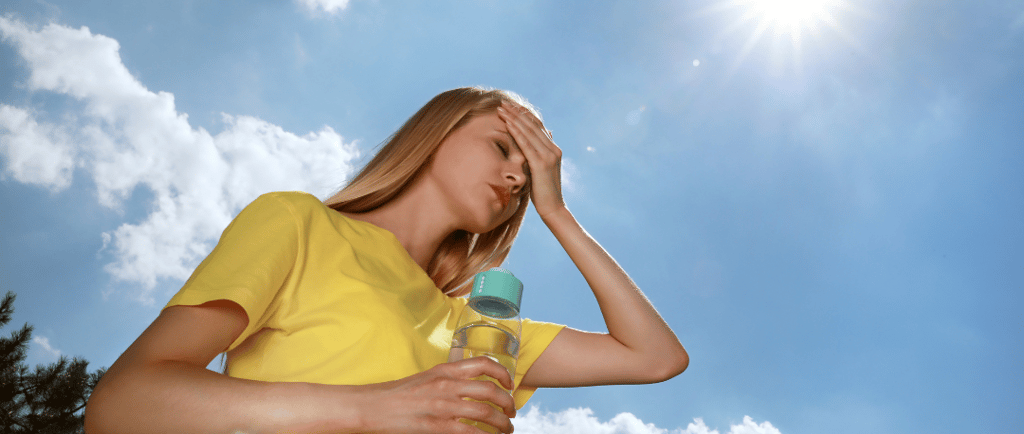Electrolytes: The Key to Beating Fatigue in Hot Weather and Exercise
Learn how electrolyte loss during hot weather or intense exercise can cause fatigue, dizziness, and cramps, and discover effective ways to restore balance.
SELF-CARE
8/22/20253 min read


Electrolytes: The Key to Beating Fatigue in Hot Weather and Exercise
Sometimes, even when we drink plenty of water, we can still feel tired, dizzy, or nauseous in hot weather. The same can happen during exercise. We might feel light-headed or experience muscle cramps despite staying well-hydrated.
One possible reason is a lack of electrolytes, the essential minerals our bodies need to function properly. When we sweat or become dehydrated, we lose not only water but also these vital minerals.
In this post, we’ll explore why electrolytes are crucial for our health, how we lose them, and the best ways to replenish them in hot weather and after exercise.
What Are Electrolytes?
Electrolytes are minerals that carry an electric charge and are essential for many processes in the body. They are found in your blood, sweat, and urine, and keep your body running smoothly — from helping your heart beat to allowing your muscles to contract.
The main electrolytes include:
Sodium
Potassium
Magnesium
Calcium
Chloride
Why Electrolytes Are Important
Electrolytes play a vital role in:
Balancing fluid levels in the body
Supporting nerve signals so your brain can communicate with your muscles
Helping muscles contract and relax effectively
Maintaining a healthy pH level in the blood
Without enough electrolytes, your body can’t function at its best, and symptoms can develop quickly.
What Happens When We Lack Electrolytes
If electrolytes aren’t replaced after they’re lost, you may experience:
Fatigue
Dizziness or light-headedness
Headaches
Muscle cramps or weakness
Nausea
Why We Lose Electrolytes in Heat and Exercise
Hot weather and exercise both increase sweating. Sweat contains water, but it also carries a significant amount of sodium and smaller amounts of other electrolytes.
Whether you’re out on a summer walk or pushing through an intense workout, your body loses these minerals along with fluid, and they need to be replaced to maintain balance and performance.
How to Replenish Electrolytes Naturally
You don’t always need store-bought sports drinks. Everyday foods and simple homemade drinks can help restore electrolyte balance.
Electrolyte-rich foods:
Sodium: Sea salt
Potassium: Bananas, sweet potatoes, spinach, coconut water
Magnesium: Spinach, legumes, pumpkin seeds, almonds
Calcium: Yoghurt, cheese, leafy greens
Chloride: Seaweed, tomatoes, table salt
Hydration Recipes for Different Needs
Hot Weather Hydration Drink (Everyday Use in Heat)
Designed for keeping hydrated during summer days, light activity, or mild sweating.
Ingredients:
1 litre of water
½ teaspoon sea salt or Himalayan pink salt (about 1.5 g salt = ~600 mg sodium)
2 tablespoons lemon or lime juice
1 tablespoon honey or maple syrup (or to taste)
Optional: splash of coconut water for extra potassium
Why:
Lower sodium and natural sugars make it gentle for daily drinking while replacing minerals lost through mild sweating.
When to Drink:
When you start sweating, whether from warm weather, light outdoor activity, or being indoors without air conditioning.
Exercise Recovery Electrolyte Drink (Post-Workout or Long Sweat Sessions)
Designed for rehydration after 60–90+ minutes of exercise or heavier sweat loss.
Ingredients:
1 litre water
½ teaspoon table salt (3.5 g salt = ~1,725 mg sodium — matches WHO ORS ratio)
4 teaspoons sugar (20 g — enough to aid sodium absorption without excess)
Optional: squeeze of orange or lemon for flavour & potassium boost
Why:
Higher sodium content speeds fluid absorption and restores electrolyte balance after intense activity.
When to Drink:
When you start sweating heavily, during or after long workouts, runs, sports, or other activities where your clothes become noticeably damp from sweat.
Disclaimer:
These drinks are intended for situations where you are actively sweating and losing fluids. They are not necessary for everyday hydration if you are at rest or in cool conditions. For regular hydration, plain water and a balanced diet are usually sufficient.
Conclusion
When we aim to eat healthily, we often focus on vitamins, antioxidants, and calories. However, during extreme heat or intense exercise, it’s equally important to pay attention to minerals. A lack of electrolytes can lead to fatigue, dizziness, headaches, nausea, muscle cramps, or weakness.
Minerals play a vital role in balancing body fluids, transporting nutrients throughout the body, supporting the nervous system, enabling muscles to contract and relax, and maintaining a healthy pH balance. This is why replenishing them is essential.
In hot weather or after intense exercise, we may need more minerals such as sodium (in moderation and according to individual health needs), potassium, magnesium, calcium, and chloride.
By anticipating and preparing for hot weather or demanding workouts, we can prevent unpleasant symptoms, making summer activities and exercise more comfortable, energised, and enjoyable.
Sakura Fitness & Beauty
Promoting fitness, health, wellness, and beauty.
© 2025. All rights reserved.
London, UK
info@sakurafitnessbeauty.com
